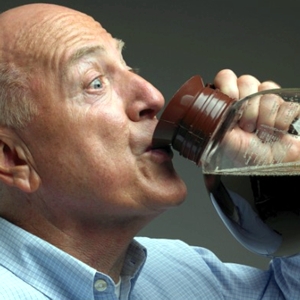Caffeine has been more and more-top-of-mind with consumers over the past couple of years. But there remains an overall significant level of confusion among average North Americans about, “How much caffeine is ‘right’ for you?”
Caffeine is like other stimulants – in fact, any substance or medication designed to help regulate your mood or boldily unctions. Everybody needs to determine what dose is appropriate for them…
Doctors aware…
Doctors are acutely aware of the dosing issue – especially when preparing to prescribe powerful drugs which can be useless in insufficient doses, and can result in serious complications in excessive amounts.
But what about over-the-counter meds and supplements? And, more importantly, what about non-drug substances such as alcohol and caffeine for which consumers decide for themselves how much is too much?
The ‘Bond’ principle
Ian Fleming wrote, wisely, in his début novel, Casino Royale, that , “The first glass too many of champagne tastes bitter’.”
If only it was that simple for each of us to determine how much caffeine is too much. Because there are days when we are so stressed, rushed and overloaded it’s hard to keep track of how much caffeine we’ve consumed. And know at what point the caffeine boosters we’re using may doing us more harm than good.
ABC News asked its medical expert in residence, Dr. Darien Sutton, to unravel the caffeine Gordian Knot…
On the plus side
Caffeine – particularly as an active ingredient in coffee – has its pluses as well as it’s minuses. The most recent studies show coffee can reduce our risk of depression, boost metabolism thanks to its anti-oxidants and anti-inflammatories, and specifically reduce insulin resistance, fighting Type-2 Diabetes. But first and foremost, we know caffeine as a stimulant. And we use it to kick-start our mornings and boost awareness throughout the day.
In fact, latest figures show more than 90 percent of Americans drink at least one cup of coffee a day. But how does that compare with official recommendations? And how do we, as individuals. stack up against the official numbers?
Over-stimulation the downside
Sutton says it’s easy to know when you may have exceeded your personal limit for caffeine. Symptoms include:
- Increased heart rate
- Palpitations,
- Elevated blood pressure. And…
Perhaps the best-known indicators
of caffeine overdose:
- ‘The jitters’, And…
- Trouble sleeping.
Government says…
The US Food and Drug Administration (FDA) has declared 400 mg per day the maximum dose of caffeine the average healthy adult should consume. That corresponds to the limit recommended by most Western countries’ regulation agencies. By way of comparison, 400 mg of caffeine is roughly equal to four cups of brewed coffee, 10 cans of cola or two ‘energy shot’ (eg.- Red Bull) drinks.
By the numbers, Sutton says: 8 oz. / 235 ml of ‘standard’ coffee contains 95 – 100 mg of caffeine; the same amount of ‘standard’ black teas contains 40 – 50 mg of caffeine, and that much green tea delivers about 30 mg of caffeine.
On the high end… one 8 oz. / 235 ml can of Red Bull energy drink contains 80 mg of caffeine – about the same as 1 cup of coffee. But different energy drinks may contain markedly different doses. Starting with Redd Bull at the bottom of the scale, they range up to 150 mg per 8 oz. / 235 ml serving.
My take
My own experience also tells me… Your body size or weight is no sure indicator of your caffeine tolerance. Only experience will tell you how much is ‘enough’ or ‘too much’ for you.
Given the astounding range of sizes of take-out coffee cups in use at various retailers these days, you may have to resort to your smart phone calculator app to figure out accurately how much caffeine is in the serving you normally order.
And, of course, regular coffee will probably contain less caffeine than the same serving size of dark-roast or espresso, and more than a ‘diluted’ fancy beverage such as a Lattée or Cappuccino.
Bottom line: When confusion sets in at the coffee shop, ask the barista. When you’re comparing cans in the store, the caffeine content of the particular product you’re considering should be printed clearly on the label.
Happy juggling!
~ Maggie J.


